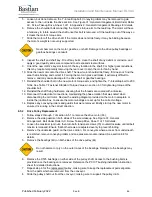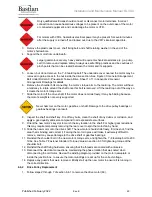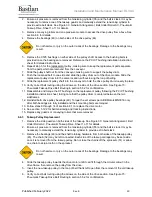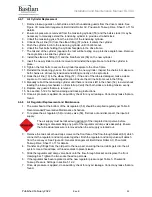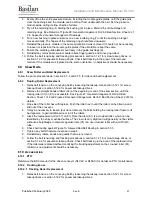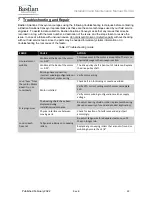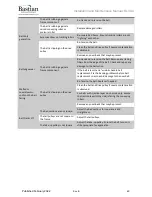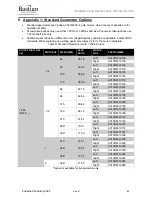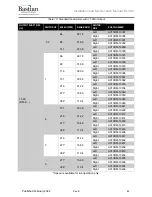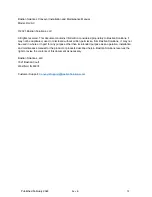
Installation and Maintenance Manual: RLVAC
Published February 2022
60
Belt dust
generation
The belt is rubbing against a
frame component.
Re-track and re-tension the belt.
The belt is rubbing against a
seized conveying roller or
pressure roller
Replace damaged rollers.
Excessive skew on tracking rollers
Re-square bed frame. Ensure tracking rollers are not
“fighting” each other.
The belt is slipping on the drive
pulley
Re-tension the belt.
Clean the belt and drive pulley if severe contamination
is observed.
Remove any overloads that may be present.
Belt edge wear
The belt is rubbing against a
frame component.
Re-track and re-tension the belt. Remove any trailing
fibers from the edge of the belt. Check and repair any
damage to the belt splice.
If the belt is less than 3” wide: Schedule belt
replacement. Fix the tracking problems before belt
replacement so as to avoid damage to the new belt.
Melted or
severely worn
spots on the belt
facing
The belt is slipping on the drive
pulley
Re-tension the belt. Replace if needed.
Clean the belt and drive pulley if severe contamination
is observed.
For belts with traction layer on one side only, ensure
the traction layer (shiny side) is facing the conveying
rollers.
Remove any overloads that may be present.
Belt tracks off
The bed sections are not square.
Adjust the bed sections for squareness and
straightness.
The tail pulleys are not square to
the frame.
Adjust the tail pulleys.
The take-up pulley is not square.
Adjust the take-up pulley. Ensure the belt tension is
still appropriate for application.

